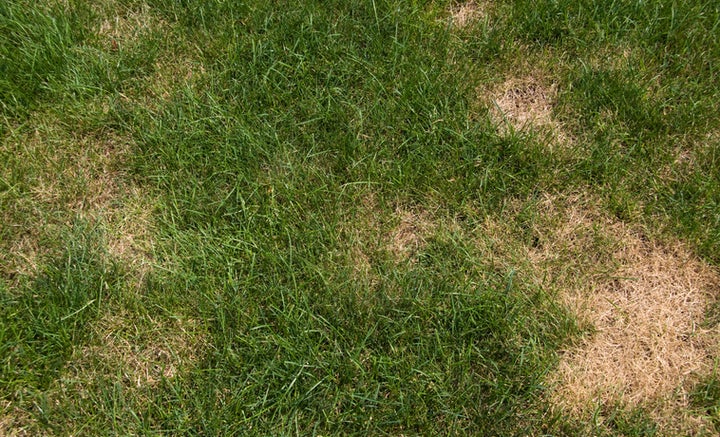
Summer has its perks, but let’s fact it – the season can be tough on your lawn.
Between the drying soil, the overheated plant pots, and the flourishing weeds, the sun can wreak havoc on your grass. And maybe because you’re having people over more, or maybe because of the heat, those annoying yellow patches prove themselves to be real summer babies.
Most of us chalk the discolouration down to simple dehydration. But it turns out there are plenty of reasons for the Yellow Patch of Doom to appear on your lawn. So, we thought we’d share the most common causes – and tell you what to do about it.
Why is my lawn yellow?
Yes, sometimes this is caused by hydration issues. “Too much or not enough water can turn your lawn yellow or straw-coloured. Too much water can drown grass roots and rob the soil of oxygen and that lush green colour. Too little water will create drought symptoms that turn your lawn yellow or some shade of brown,” shared Family Handyman.
But there are many other issues that can create straw-like patches on your lawn. These include:
- Too little nitrogen
- Cutting your grass too short – this can expose the grass’ roots, leaving it vulnerable to drought and infection
- Excess nitrogen, which can come from fertiliser and dog urine
- A grub infestation, like the larvae of June bugs and daddy-long-legs
- Too much pressure and weight from objects like paddling pools, hot tubs, lawn furniture, and more
- Soil compaction, which can happen because of heavy machinery or mixing sand into your soil
- Fungal diseases – a “fusarium patch, also called snow mould, is a common cause of brown patches on lawns”
Phew...
OK, so what can I do about it?
It depends on the issue. It’s a good idea to keep your grass on the longer side and not let the blade dip below two inches to protect the root of your grass.
The RHS advises against using chemical fertilisers on your lawn, as drought is increasingly more of an issue for UK gardeners – and applying chemicals to a scorched garden can cause some serious damage.
But if you’re going to use them, they say to “choose a specific spring/summer lawn fertiliser and apply it at the manufacturer’s recommended rate in mid-spring, while the lawn is green and actively growing (usually late March/April).”
They add that it’s a good idea to spray a thin layer evenly across your garden in moist, cool conditions.
Grubs can be gotten rid of with the introduction of natural predators, like robins and beneficial nematodes. You could also consider spraying neem oil on affected areas, as “pure neem oil deters the grubs from feeding, growing, and laying eggs. For best results, mix neem oil with water (according to label directions) and spray the diluted solution on affected areas.”
Moving heavy garden furniture will help to get rid of pressure-related yellow patches. And to loosen compacted soil,Michigan State University urges you to resist the urge to till or dig up the dirt as this can create more problems further down the line. Instead, they suggest “adding organic matter by using mulch or compost over the top of a flower bed or simply hand-spade it into the top 3 to 6 inches of soil.”
And to get rid of fungus, the RHS suggest you improve your garden’s airflow by pruning overhanging greenery. They also recommend manually removing heavy morning dew with a switch, and adding aeration holes into your garden with tines or through scarification. Essentially, the goal is to ensure the garden isn’t left too wet for too long.
The work of a gardener is never done...